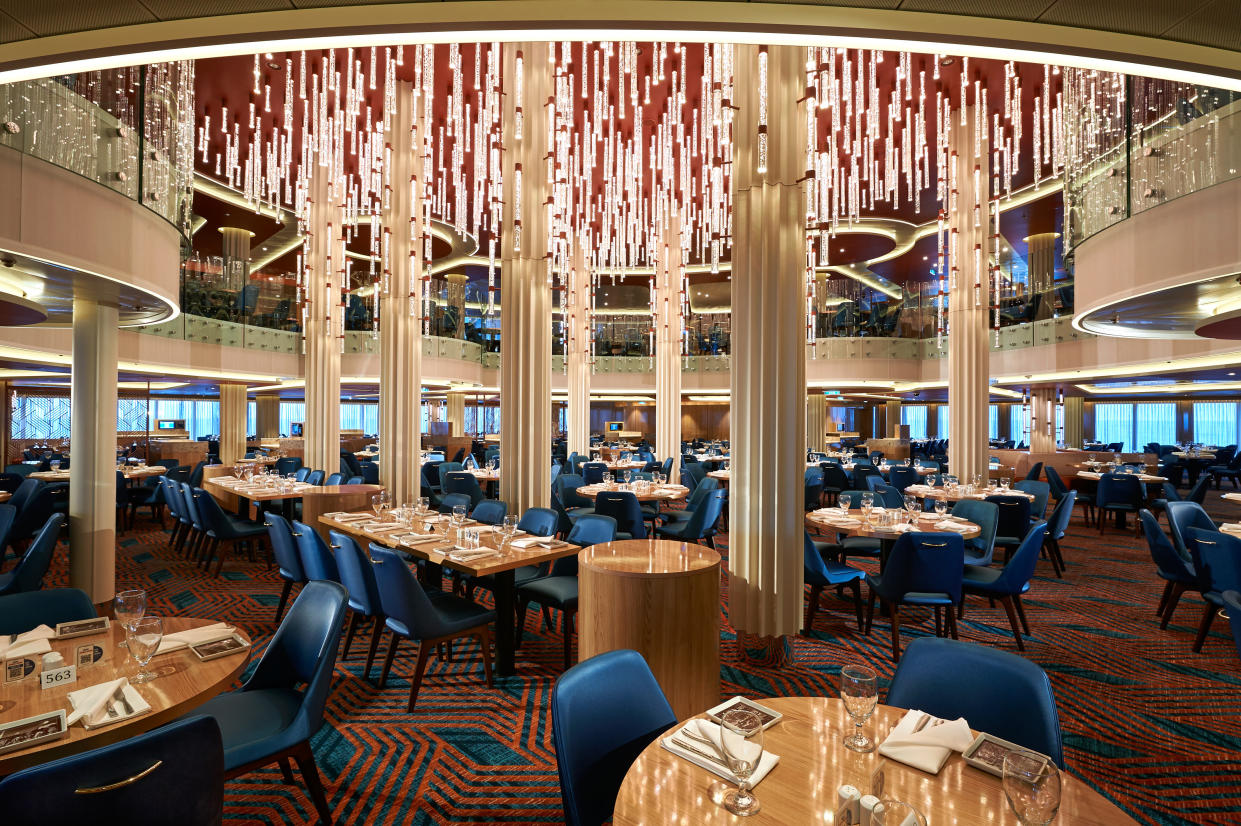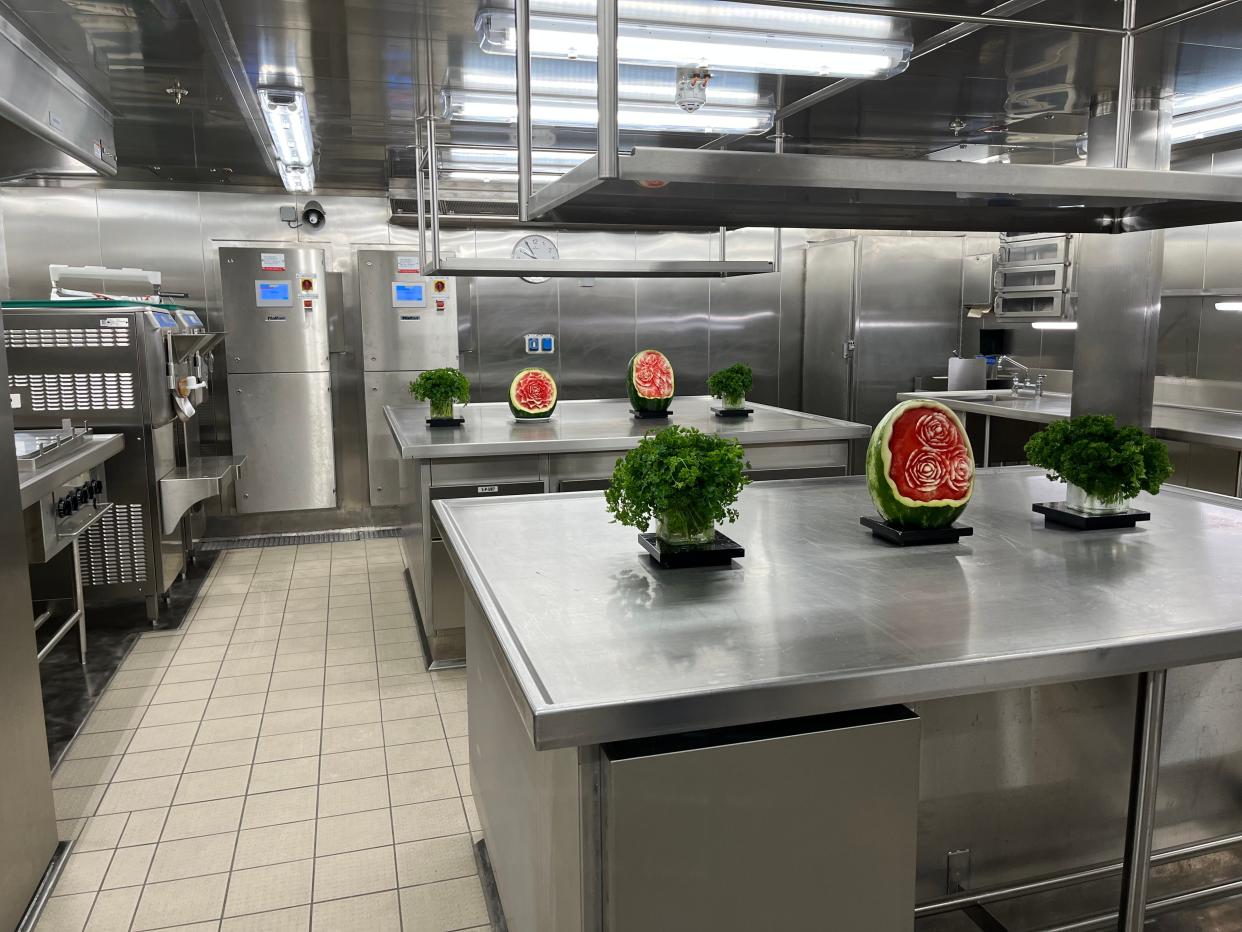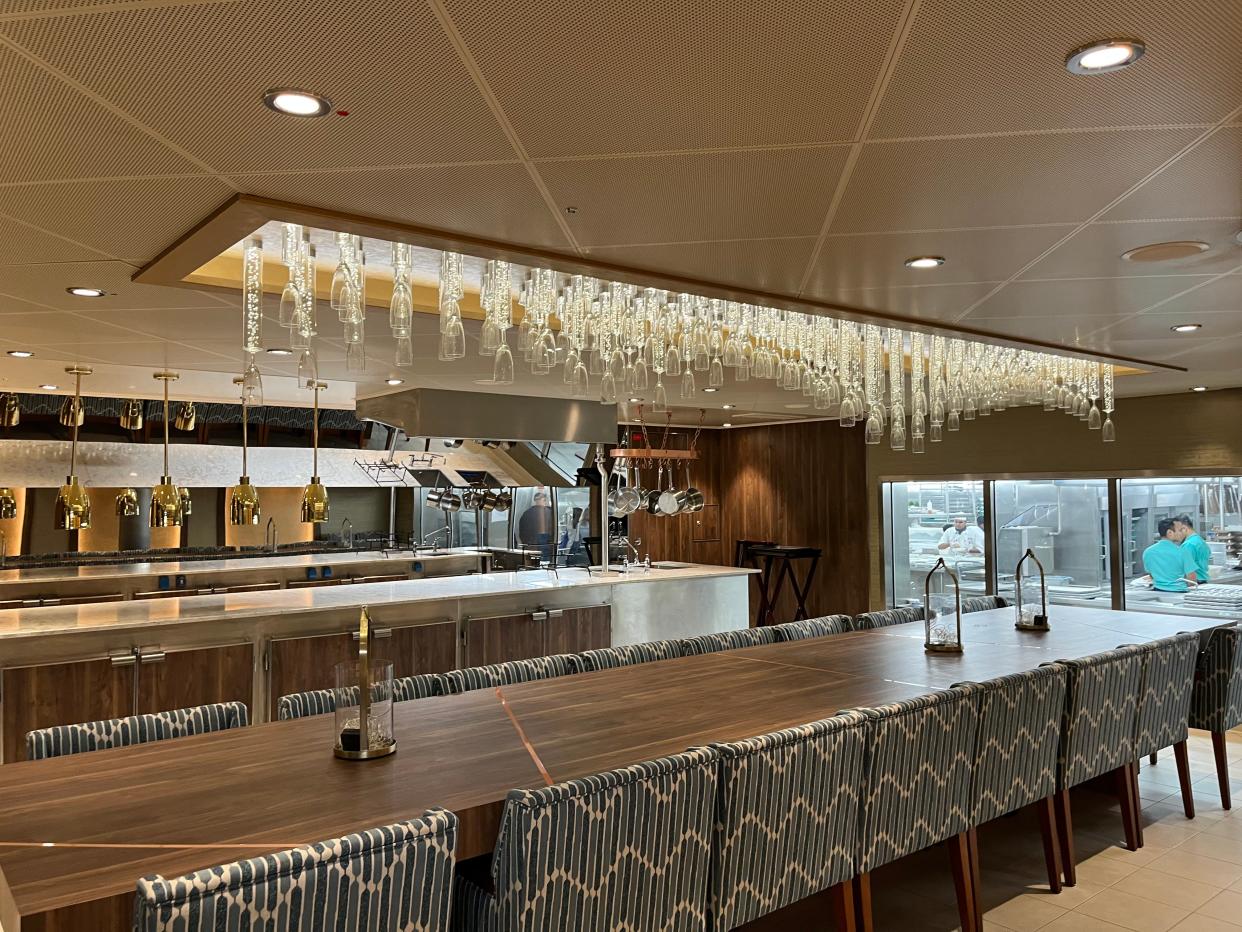Behind the scenes: How this Carnival cruise ship galley serves thousands of meals a night

"Behind the Scenes” is a five-part series focusing on the inner workings of the travel industry and how those impact the consumer’s final product. If you'd like to contribute to our future reporting and share your experience as a source, you can click here to fill out this quick form.
On any given night, Pacific Restaurant on Carnival Cruise Line’s newest ship is a hub of activity. On multiple evenings during a recent sailing, guests lined up at the entrance to one of the main dining rooms on Carnival Jubilee, which gave way to a two-deck space with ornate, twinkling light fixtures and soaring white columns.
But a windowless room several decks below is where the real action happens.
The ship’s main galley, lined with metallic counters, stoves and ceiling panels, cranks out 15,000 dishes per night on average. The kitchen – one of 18 galleys overall – supplies multiple meals, but dinner is its busiest time.
“It's not a small operation by any means, especially on this class of ship,” Vivek Menon, the ship’s Food and Beverage Director told USA TODAY on board. Here’s how they do it.
Ever wanted to ride an airport bag belt? You can't, but we can show you where they go.
Behind the scenes with Disney's baby elephant: 'We don't force our animals to do anything'
How does a cruise ship galley work?
Lots of planning happens before meals ever hit guests’ plates. Food orders are placed around two weeks in advance and loaded onto the vessel on turnaround days, said Menon, whose food and beverage team includes just under 900 members (Jubilee can accommodate more than 6,000 guests).
The ship's galley staff cooks roughly 5,000 pounds of whole chicken, grills around 5,000 pounds of strip steak and bakes approximately 600 loaves of bread every week.
One morning in late February, fish was thawing in a walk-in refrigerator the size of a small bedroom on deck 3, two decks below the galley. According to a label on its exterior, a nearby freezer housed ice cream, while another room was filled with boxes of cruise essentials like Grey Goose Vodka and Crown Royal whiskey.
Chefs then place orders with the vessel’s storeroom team two days before they need the ingredients. “Pre-prep” – such as trimming and marinating chicken breasts – takes place a day beforehand, with more prep following on the day of service, though the time required varies.
Those chicken breasts, for example, might be prepped an hour prior to service. By contrast, “Prime rib cooks for six hours,” Menon said. “A short rib braises for 12 hours, so obviously that has a huge lead time. So, it depends on the dish.”
Then it’s showtime. The galley provides food for an average of 4,000 people a night between Pacific Restaurant and the ship’s other dining room, Atlantic Restaurant.
Orders start trickling in at around 5:45 p.m., but the crew is ready. Chefs are given a head count at the beginning of the evening, at peak time and near the end of dinner.

For example, Menon said, “If we’re cooking 1,000 fish for early dining, 1,000 filets, the counts are spread out in such a way that in the first 15 minutes, the cook is running around 200 ahead of count, because these counts are very quickly going to catch up,” Menon said.
As orders slow down, they narrow the gap and reduce output accordingly. “At the end of dinner service, you have very little left,” Menon said. “By the time it's nine 9, 9:15, we’re already down one or two, four or five pieces, depending on the volume we're setting up.” Guest flow differs each evening, however.
At the beginning of a cruise, the crew starts logging how much of a given item is used on that sailing – down to details like how guests want their steak cooked – which allows them to prepare more or less as needed.
Does food go to waste?
Tracking guest preferences is about more than just providing good service. The line has paid close attention to what goes uneaten as part of efforts to reduce food waste. “We looked at what the guests don't like, what's coming back on the plate,” Menon said. Then they can make changes.
Carnival also introduced QR-code menus in the wake of the COVID-19 pandemic, which has made it easier to tweak menus (though they have printed ones as well). Other measures, such as adding a charge for once-included room service in 2022, have helped the line move closer to those aims, too.
“Before (when) you walked down a corridor, every second cabin, you're going to see a plate outside with some things half-eaten because it was complimentary,” Menon said.
The line generated nearly 2.5 pounds of food waste per person around five years ago. Now that number is about 1.5 pounds. (Read more about how cruise lines have been working to reduce food waste here.)

What is Carnival’s Chef’s Table?
If guests want to peek behind the culinary curtain, they can see the galley for themselves. Carnival’s Chef’s Table experience features a tour and a multi-course dinner for between 12 and 16 people, according to the line’s website.
The sleek dining room that hosts the dinner on Jubilee was tucked deep inside the galley space, giving passengers up-close views of the kitchen. The menus – which can’t be found elsewhere on board – vary from ship to ship but have included items like knotted parmesan herb brioche, black-garlic cannelloni, a “lamb trilogy” (roasted, broiled and confit) and more.
When is the best time to take a cruise? We broke it down by region.
The experience is available on all Carnival ships and ranges from $90-$150 per person, depending on the vessel and the menu. Passengers can make reservations online after booking their cruise.
The reporter on this story received access to this sailing from Carnival. USA TODAY maintains editorial control of content.
What behind-the-scenes aspect of travel would you like to know more about?
Nathan Diller is a consumer travel reporter for USA TODAY based in Nashville. You can reach him at ndiller@usatoday.com.
This article originally appeared on USA TODAY: How this kitchen on Carnival's newest ship cooks thousands of meals
